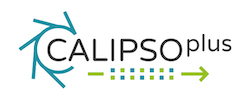JRA1 -Metrology On One-Nanometer-Precise Optics (MooNpics)
Description
With new light sources under construction or planned— free electron lasers and ultimate storage rings — diffraction limited X-ray radiation will become available for new classes of scientific and technological applications. To fully utilisation of these sources it is required to implement diffraction limited X-ray optics with specifications about ten times better than optics for current 3rd generation synchrotron sources. Most demanding is the fabrication of long (1m) X-ray mirrors needed for beam transport and extreme focussing. The required shapes vary from ultra-flat (> 3000 km) to strongly curved (< 100 m; in some cases below 15 m) for nano-focusing purposes. Such diffraction limited optics are now in reach using deterministic polishing techniques, like e.g. ion-beam-figuring, allowing mirror profiles to be shaped with single nanometer precision. However, in order to achieve such performance it is crucial that metrology of the long mirrors reaches nanometer precision to provide input data for the deterministic polishing techniques. A key technology for metrology of strongly curved and long mirrors is stitching, combining highly accurate piece-wise measurements of sub-apertures to obtain a full image of the optical surface without significant loss of accuracy. Different metrology labs and vendors in Europe have developed and implemented stitching techniques for interferometry and slope-measuring techniques. At present, the hardware implementations and software algorithms for this metrology technique vary strongly, leading to a situation where the level of systematic errors is often not clear. For long mirrors errors often accumulate beyond the required limits for diffraction limited optics.
Furthermore, mirror mounts have to reach a level of reproducibility of similar level or better to the optical polishing to enable positioning and controlling the mirrors in the beamlines and instruments. Persistent R&D efforts in Japan for super-polishing have led to significant improvements in recent years and — at the same time — to a single supplier situation with very limited volume output to Europe.
Finally, as diffraction-limited focusing improves to reach foci at the sub-micrometer scale, it becomes increasingly difficult to measure and optimize X-ray spot sizes at the sample. Fluorescence screens with optical cameras don’t provide sufficient resolution, while knife-edge scans or imprint techniques are very time consuming and suffer from beam fluctuations. The method of choice for spatial characterization is X-ray wavefront metrology, providing a fast and accurate beam profile characterization once fully developed and optimized.

European XFEL scientist Maurizio Vannoni inspects the delivered superflat mirror, which does not deviate from a perfect surface by more than a billionth of a metre. ©XFEL
Aim of Joint Research Activity – JRA1
The goal of JRA1 is to push mirror metrology in Europe to single-nanometer figure error and 20 nrad rms slope error precision, and to make such metrology available and to disseminate the respective know-how. Likewise, X-ray light sources and X-ray mirror vendors will be enabled to make use of these techniques with the benefit for nm precise mirror fabrication and their use in diffraction-limited x-ray applications. Fast and accurate sub-micron resolution beam profile measurements of diffraction limited focal spots will be available using wavefront techniques.
Publications
Svetina, C. et al., Optics Letters 44 (2019), 574 (doi.org/10.1364/OL.44.000574)
